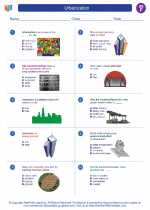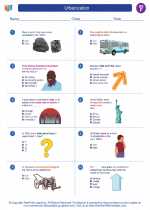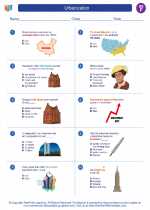Factors Contributing to Urbanization
- Industrialization: The growth of industries and factories in urban areas attracts people from rural areas in search of employment and better living standards.
- Technological advancements: Improved transportation and communication technologies make it easier for people to relocate to urban areas.
- Economic opportunities: Urban areas offer a wider range of job opportunities and access to essential services such as healthcare and education.
- Social factors: Urban areas often provide a diverse and vibrant social environment, attracting people seeking cultural and social experiences.
Impacts of Urbanization
Urbanization has several significant impacts on society, the economy, and the environment:
- Social impacts: Changes in lifestyle, social interactions, and community dynamics.
- Economic impacts: Growth of industries, increased employment opportunities, and higher income levels.
- Environmental impacts: Increased pollution, changes in land use, and strain on natural resources.
- Infrastructure challenges: Urban areas may face challenges in providing adequate housing, transportation, and public services to the growing population.
Study Guide
To gain a comprehensive understanding of urbanization, consider the following study guide:
- Research the historical context of urbanization and its impact on the development of cities.
- Examine case studies of specific cities or regions that have undergone rapid urbanization.
- Explore the social, economic, and environmental factors contributing to urbanization in different parts of the world.
- Analyze the challenges and opportunities presented by urbanization for governments, urban planners, and local communities.
- Consider the future implications of ongoing urbanization on a global scale.
[Urbanization] Related Worksheets and Study Guides:
.◂Social Studies Worksheets and Study Guides Sixth Grade. Urbanization
Study Guide Urbanization
Urbanization  Worksheet/Answer key
Worksheet/Answer key Urbanization
Urbanization  Worksheet/Answer key
Worksheet/Answer key Urbanization
Urbanization  Worksheet/Answer key
Worksheet/Answer key Urbanization
Urbanization 

 Worksheet/Answer key
Worksheet/Answer key
 Worksheet/Answer key
Worksheet/Answer key
 Worksheet/Answer key
Worksheet/Answer key

The resources above cover the following skills:
National Curriculum Standards for Social Studies (NCSS)
TIME, CONTINUITY, AND CHANGE
SOCIAL STUDIES PROGRAMS SHOULD INCLUDE EXPERIENCES THAT PROVIDE FOR THE STUDY OF THE PAST AND ITS LEGACY.
KNOWLEDGE - Learners will understand:
Concepts such as: chronology, causality, change, conflict, complexity, multiple perspectives, primary and secondary sources, and cause and effect.
INDIVIDUALS, GROUPS, AND INSTITUTIONS
SOCIAL STUDIES PROGRAMS SHOULD INCLUDE EXPERIENCES THAT PROVIDE FOR THE STUDY OF INTERACTIONS AMONG INDIVIDUALS, GROUPS, AND INSTITUTIONS.
KNOWLEDGE - Learners will understand:
Concepts such as: mores, norms, status, role, socialization, ethnocentrism, cultural diffusion, competition, cooperation, conflict, race, ethnicity, and gender.
National Standards for Civics and Government (NSCG)
What are the foundations of the American political system? What are the distinctive characteristics of American society?
Distinctive characteristics of American society. Students should be able to identify and explain the importance of historical experience and geographic, social, and economic factors that have helped to shape American society. To achieve this standard, students should be able to
Explain important factors that have helped shape American society
Social, economic, and geographic mobility
Large scale immigration
How does the government established by the constitution embody the purposes, values, and principles of American democracy? What does the national government do?
Major responsibilities for domestic and foreign policy. Students should be able to explain the major responsibilities of the national government for domestic and foreign policy. To achieve this standard, students should be able to
Identify historical and contemporary examples of important foreign policies, e.g., Monroe Doctrine, Marshall Plan, immigration acts, foreign aid, arms control, promoting democracy and human rights throughout the world
National Center for History in Schools (NCHS)
Historical Thinking Standards
Historical Comprehension
Reconstruct the literal meaning of a historical passage.
Historical Analysis and Interpretation
Analyze cause-and-effect relationships and multiple causation, including the importance of the individual, the influence of ideas.
United States History Content Standards
Era 4: Expansion and Reform (1801-1861)
How the industrial revolution, increasing immigration, the rapid expansion of slavery, and the westward movement changed the lives of Americans and led toward regional tensions.
The student understands the first era of American urbanization.
Era 6: The Development of the Industrial United States (1870-1900)
How the rise of corporations, heavy industry, and mechanized farming transformed the American people.
The student understands the connections among industrialization, the advent of the modern corporation, and material well-being.
The student understands the rapid growth of cities and how urban life changed.
Massive immigration after 1870 and how new social patterns, conflicts, and ideas of national unity developed amid growing cultural diversity.
The student understands the sources and experiences of the new immigrants.
The student understands how new cultural movements at different social levels affected American life.
The rise of the American labor movement and how political issues reflected social and economic changes.
The student understands how Americans grappled with social, economic, and political issues.
World History Content Standards
Era 7: An Age of Revolutions, 1750-1914
Patterns of nationalism, state-building, and social reform in Europe and the Americas, 1830-1914.
The student understands the political, economic, and social transformations in the Americas in the 19th century.
Patterns of global change in the era of Western military and economic domination, 1800-1914.
The student understands connections between major developments in science and technology and the growth of industrial economy and society.
The student understands the causes and consequences of European settler colonization in the 19th century.
Major global trends from 1750-1914.
The student understands major global trends from 1750 to 1914.
Era 8: A Half-Century of Crisis and Achievement, 1900-1945
Reform, revolution, and social change in the world economy of the early century.
The student understands the world industrial economy emerging in the early 20th century.